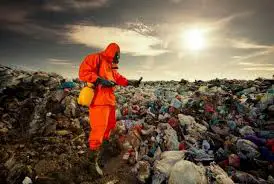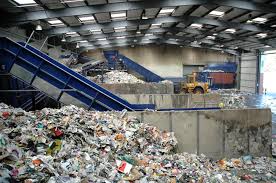Moving towards this objective is moving towards a utopian environmental view that there is no such thing as waste, only resources. Hence, everything considered useful for something even though a waste somewhere.
To some people, a perfect system for waste disposal system would be a technology that is capable of accepting an unlimited amount of waste and safety containing it forever outside the sphere of human life. This is an impossible dream and it is not environmentally sound.
The environmentally preferred concept with respect to waste management is to consider wastes as resources out of place. With increasing cost of raw materials, energy, transportation and land to reuse and recycle more resources will become financially feasible.
Read Also: Guiding Principles of Integrated Biomedical Waste Management
Moving towards this objective is moving towards a utopian environmental view that there is no such thing as waste, only resources. Hence, everything considered useful for something even though a waste somewhere.
Resource recovery means obtaining some economic benefits from materials that has been regarded as waste by someone. It includes:
Reduce: the objective here is to reduce the amount of urban and other types of wastes that must be disposed of in landfills, incinerators, or other waste management facilities.
Reducing waste can be facilitated by better packaging establishment of recycling programs and large-scale composting programs.
Reuse: this suggests using the same materials for the same purpose again, rather than disposing of it. An example of this is the refilling of soft drink bottles.
Conversion: this involves the processing of materials to make something different (such as producing padding for clothing and steeping bags from plastic bottles or producing compost from food waste)
Recycling: this involves processing materials so that it can be used again as the same material, such as the processing of waste paper to make pulp and then new ones.

Recycling refers to the collection and reuse of waste materials such as empty beverage containers. The materials from which the items are made can be reprocessed into new products.
Read Also: Guiding Principles of Integrated Biomedical Waste Management
Material for recycling may be collected separately from general waste using dedicated bins and collection vehicles, or sorted directly from mixed waste streams.
The most common consumer products recycled include aluminum such as beverage cans, copper such as wire, steel food and aerosol cans, old steel furnishings or equipment, polyethylene and PET bottles, glass bottles and jars, paperboard cartons, newspapers, magazines and light paper, and corrugated fiber board boxes. PVC, LDPE, PP, and PS are also recyclable.
These items are usually composed of a single type of material, making them relatively easy to recycle into new products. The recycling of complex products (such as computers and electronic equipment) is more difficult, due to the additional dismantling and separation required.
The type of recycling material accepted varies by city and country. Each city and country have different recycling programs in place that can handle the various types of recyclable materials
Energy recovery (Waste-to-energy): The energy content of waste products can be harnessed directly by using them as a direct combustion fuel, or indirectly by processing them into another type of fuel.
Recycling through thermal treatment ranges from using waste as a fuel source for cooking or heating, to anaerobic digestion and the use of the gas fuel (see above), to fuel for boilers to generate steam and electricity in a turbine.
Pyrolysis and gasification are two related forms of thermal treatment where waste materials are heated to high temperatures with limited oxygen availability. The process usually occurs in a sealed vessel under high pressure.
Pyrolysis of solid waste converts the material into solid, liquid and gas products. The liquid and gas can be burnt to produce energy or refined into other chemical products (chemical refinery). The solid residue (char) can be further refined into products such as activated carbon.
Gasification and advanced Plasma arc gasification are used to convert organic materials directly into a synthetic gas (syngas) composed of carbon monoxide and hydrogen. The gas is then burnt to produce electricity and steam. An alternative to pyrolisis is high temperature and pressure supercritical water decomposition (hydrothermal monophasic oxidation).
In conclusion, the environmentally preferred concept with respect to waste management is to consider wastes as resources out of place. With increasing cost of raw materials, energy, transportation and land to reuse and recycle more resources will become financially feasible.
Moving towards this objective is moving towards a utopian environmental view that there is no such thing as waste, only resources.
Resource recovery means obtaining some economic benefits from materials that has been regarded as waste by someone. It includes:
Reduce: the objective here is to reduce the amount of urban and other types of wastes that must be disposed of in landfills, incinerators, or other waste management facilities. Reducing waste can be facilitated by better packaging establishment of recycling programs and large-scale composting programs.
Reuse: this suggests using the same materials for the same purpose again, rather than disposing of it. An example of this is the refilling of soft drink bottles.
Conversion: this involves the processing of materials to make something different (such as producing padding for clothing and steeping bags from plastic bottles or producing compost from food waste).

